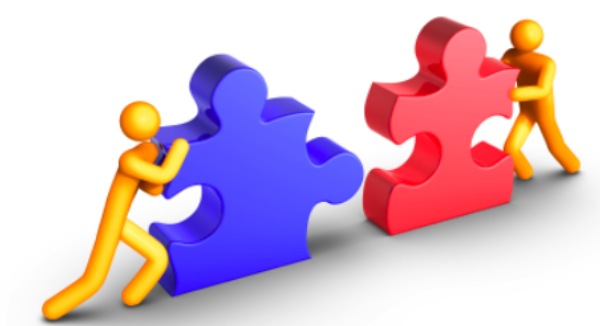Odyssey of the Mind is the place to go where it’s fun to look for problems. Our problems are not ‘practical’. We do not teach OMers how to solve A Problem, we teach them how to be Problem Solvers! Each year, we release six original Long Term Problems – five competitive problems for students from kindergarten through college and one primary problem for K-2nd graders. Each problem is original, contains a few limitations to work within, and lists scoring categories. There are two types of “problems” in Odyssey of the Mind: Long-Term Problems and Spontaneous Problems. To learn more about Our Problems please keep reading. If you’re looking for a description of the current problems you’ll find it here. Here is a link to past problems.
Long Term Problems
Long-Term Problems are the engine that propels Odyssey of the Mind. Teams select their problem when they join the program and spend weeks or months to create and develop their solution. Each team member will find a role to play in the many stages of problem-solving including brainstorming, artwork, set design, technical design, writing sketches and much more! The solutions are presented in a live performance. Thousands of teams from all over the world will select and solve the same problem but no two solutions are ever the same! Everyone learns to think Beyond the Box. Long Term problems are different every year but they fall into general categories:
① Vehicle
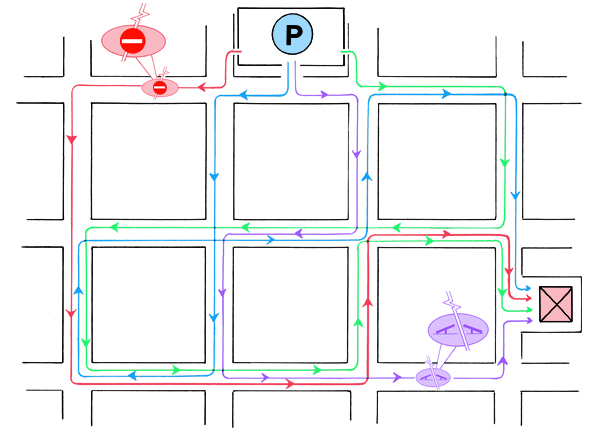
Problem #1 — Traveling through creative courses, hitting targets, delivering parts, and carrying teammates “across the sky” or “under the seas” are some of the tasks completed by original team-made vehicles. Teams use unusual sources of energy and original engineering to create vehicles that often don’t look or move like a vehicle. OMers perform an original skit that usually includes characters and special effects but the emphasis is on the running and testing of the vehicle.
② Technical
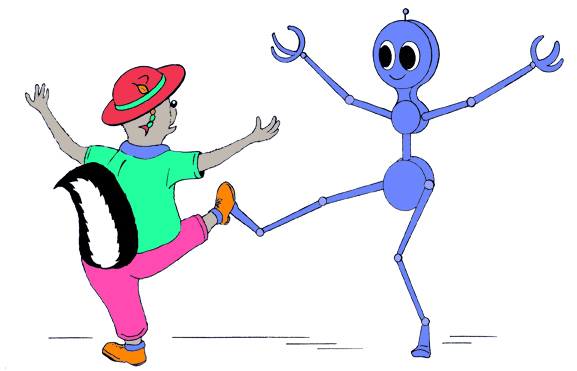 Problem #2 – Creating a robotic pet, a Not-So-Haunted pop-up House, and rubber band powered devices are technical problems our teams have solved. The level of technology is up to the team and ranges from basic engineering and electronics to more advanced robotics. Technical devices have served purposes that include producing special effects, delivering mail, and improving the lives of people in need. OMers test their devices in performances that are often hilarious.
Problem #2 – Creating a robotic pet, a Not-So-Haunted pop-up House, and rubber band powered devices are technical problems our teams have solved. The level of technology is up to the team and ranges from basic engineering and electronics to more advanced robotics. Technical devices have served purposes that include producing special effects, delivering mail, and improving the lives of people in need. OMers test their devices in performances that are often hilarious.
③ Classics
![]()
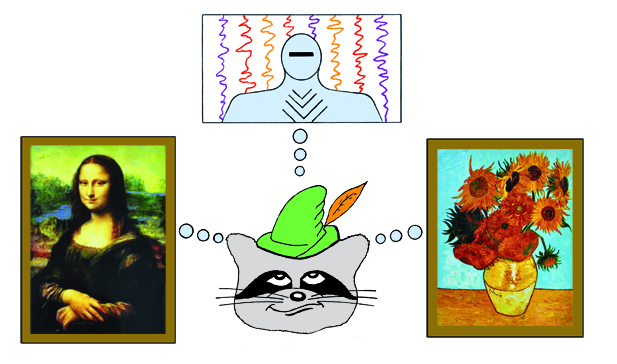 Problem #3 – Imagine turning the story of Pandora’s Box into a video game or creating an original Lost Labor of Heracles! In our Classics problem Teams write and perform original theatrical performances based on a work from classical literature, artwork, music, culture, or history. Subjects range from bringing the past to life to revisiting and rewriting history, all while OMers learn about world history. Solutions often reflect upon the majesty and sophistication of humanity’s most impactful and enduring creations.
Problem #3 – Imagine turning the story of Pandora’s Box into a video game or creating an original Lost Labor of Heracles! In our Classics problem Teams write and perform original theatrical performances based on a work from classical literature, artwork, music, culture, or history. Subjects range from bringing the past to life to revisiting and rewriting history, all while OMers learn about world history. Solutions often reflect upon the majesty and sophistication of humanity’s most impactful and enduring creations.
④ Structure
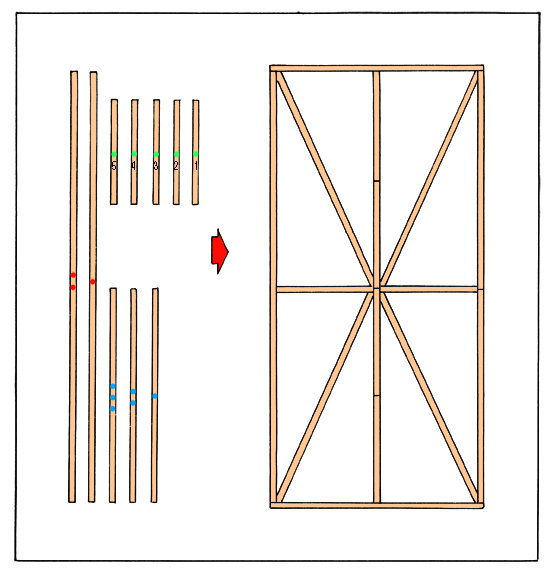 Problem #4 – Picture a 15-gram (½ ounce) structure made of balsa wood holding and balancing a stack of weights while getting rammed, twisted, or even broken apart. Each year a new problem requires an original structure to withstand a new test of strength as it holds weight until it breaks. It’s not uncommon for experienced teams to hold over 1,000 pounds. OMers create and present performances ranging from comical to extravagant where testing their structures is part of the action.
Problem #4 – Picture a 15-gram (½ ounce) structure made of balsa wood holding and balancing a stack of weights while getting rammed, twisted, or even broken apart. Each year a new problem requires an original structure to withstand a new test of strength as it holds weight until it breaks. It’s not uncommon for experienced teams to hold over 1,000 pounds. OMers create and present performances ranging from comical to extravagant where testing their structures is part of the action.
⑤ Performance
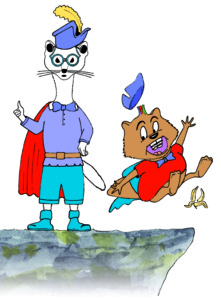 Problem #5 – Whether it is showing the world from the point of view of an animal, acting out a Food Court where all of the characters in a courtroom are food, or showing social outcasts saving the planet, you can be sure that our performance problem will be fun and unexpected. In their solutions teams integrate stage and drama elements from lighting effects to puppetry to elaborate set changes. Original characters and unusual situations give OMers plenty of opportunity to show off their creativity.
Problem #5 – Whether it is showing the world from the point of view of an animal, acting out a Food Court where all of the characters in a courtroom are food, or showing social outcasts saving the planet, you can be sure that our performance problem will be fun and unexpected. In their solutions teams integrate stage and drama elements from lighting effects to puppetry to elaborate set changes. Original characters and unusual situations give OMers plenty of opportunity to show off their creativity.
⑥ Primary (K-2)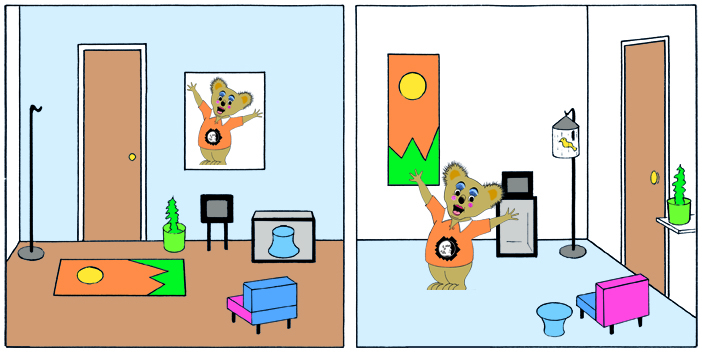
Primary Problem – Teams might present their very own prehistoric art festival or a skit where a character keeps waking up in a different place and time. Teams present their solutions at tournaments in a non-competitive showcase where they interact with judges who provide feedback. Primary problems are designed to provide younger OMers with a comprehensive, fun, and instructional experience that helps introduce them to Odyssey of the Mind.
The 2020-21 Problem Synopses are now available!
Spontaneous Problems
These are not solved over a long term. They are not solved in a short term. They are solved instantly using spontaneous creativity. Teams practice and prepare for the Spontaneous experience but the actual Spontaneous Problem they will solve is not revealed to them until they walk into the room to solve the problem! Spontaneous develops quick thinking, creativity, teamwork, and the ability to deal with the unexpected which are all important educational aspects of Odyssey of the Mind. Teams receive a copy of their problem and are allowed to ask questions during their competition time. Spontaneous Problems come from three general categories:
Verbal
Verbal Spontaneous Problems require teams to give verbal, spoken responses to questions or prompts, and those responses are scored according to how creative (or common) they seem to trained judges in the room.
 For example, teams might be asked, “Name things that are green,” or could be given random household items and asked to present a skit based on the premise, “When it rains, the strangest thing happens, I…” Teams are usually given just a few minutes to think and then asked to provide their solutions.
For example, teams might be asked, “Name things that are green,” or could be given random household items and asked to present a skit based on the premise, “When it rains, the strangest thing happens, I…” Teams are usually given just a few minutes to think and then asked to provide their solutions.
Hands-On
Hands-On Spontaneous Problems require different levels of physical interaction among team members to solve. Generally a hands-on spontaneous problem will challenge the teams to move, build, or to use provided items to complete a task.
Examples of “Hands On” problems range from building a bridge out of random items that extends as far as possible to creating a device to move different balls different distances and into scoring containers, and devising a system of communication using random objects. For Hands On problems, teams are often given a few minutes to devise, build, and test their solution prior to completing the task for score. In addition to points for completing tasks, teams are also often scored on their teamwork and creativity.
Combination
This type of problem combines some type of physical activity and verbal replies or prompts. Examples of “Combination” problems include each team member making a character from aluminum foil and then telling a story using those characters, having the team use props and costumes and say what a caption of their picture might be, or picking up objects and saying a creative use for them. Teams generally have time to look at any materials they are provided.

